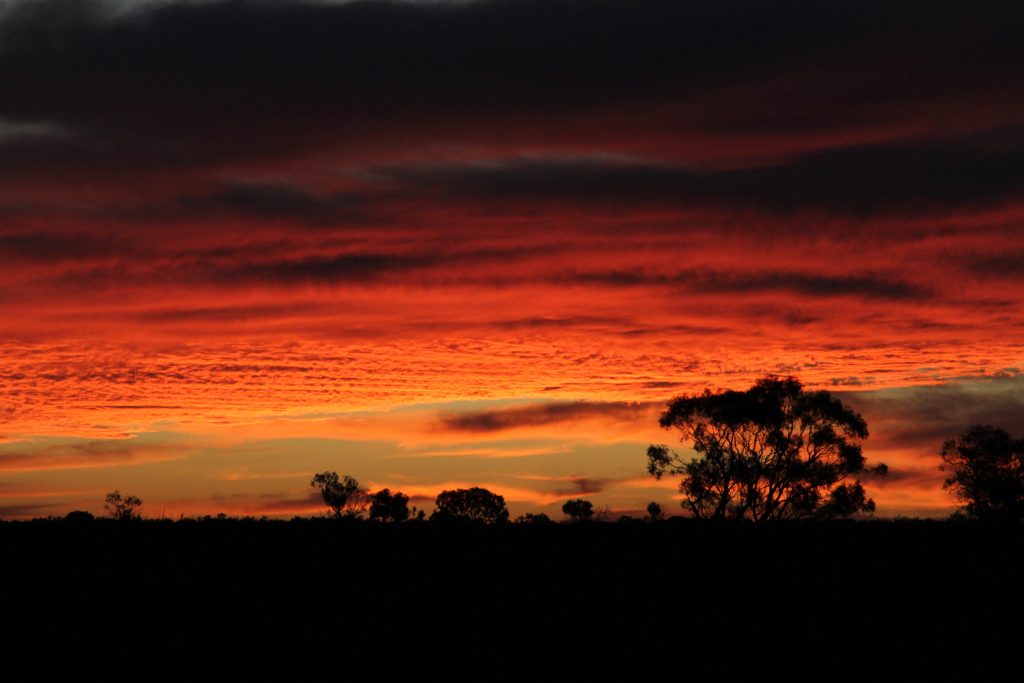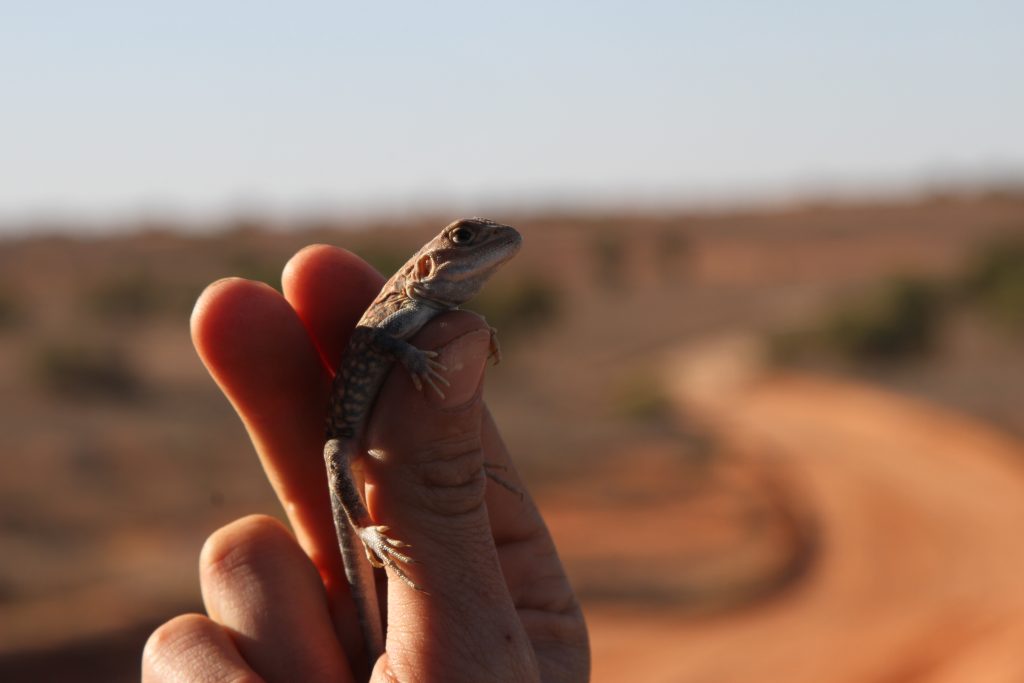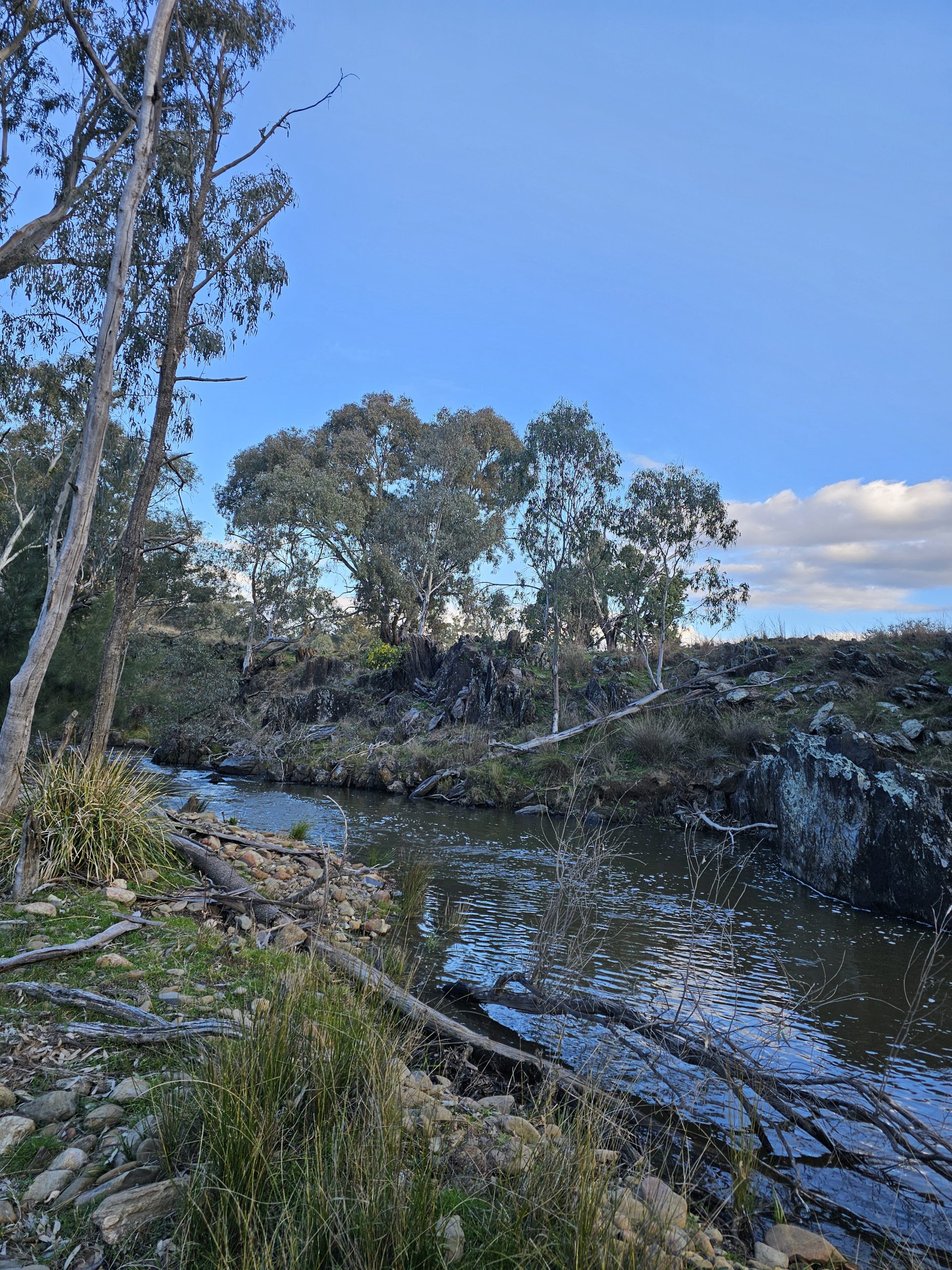A snapshot from the field: Biodiversity study in the Strzelecki Desert
Author: Carna Feldtmann, Ecology Consultant
April 30, 2025
News & Insights
Earlier this month, I joined a two-week biodiversity field survey in the heart of the Strzelecki Desert, one of Australia’s lesser-known but ecologically rich arid zones. Supported by the Niche Professional Development Program and facilitated by the University of New South Wales (UNSW), the trip provided a unique opportunity to strengthen field-based ecological skills while contributing to a long-term research initiative in semi-arid ecosystem dynamics.
The Strzelecki is characterised by sweeping red dunes, saltbush plains, and the resilient flora and fauna that define Australia’s desert ecosystems. Over the course of the campaign, we recorded a diverse array of small mammals, reptiles, and birds, some of which are rarely encountered outside remote arid zones.

Dingo (Canis familiaris) in the Strzelecki Desert
A day in the desert: Fieldwork routine
Each morning began well before sunrise, allowing us to beat the heat and maximise animal activity periods. Our early tasks included checking a series of plots with Elliott and pitfall traps, carefully processing the small mammals and reptiles captured overnight. This involved measuring and recording data such as hind limb length, body mass, and sex before safely releasing individuals at the point of capture.
As temperatures soared by mid-morning, we returned to camp for a well-earned rest and a short siesta during the hottest part of the day.
In the late afternoon, we resumed work by conducting floristic assessments and vegetation surveys. These were completed in both controlled and uncontrolled fenced plots to assess vegetation structure, species richness, and ground cover condition. We also collected scat samples from key species across various sites for future genetic analysis, helping to shed light on diet, movement patterns, and ecosystem interactions.

Sunset in the Strzelecki Desert
After dark: Spotlighting and nocturnal surveys
Evenings in the desert brought another layer of activity. As dusk fell, we conducted spotlighting surveys to detect nocturnal species active after dark. Using handheld spotlights and vehicle transects, we scanned for eye shine and movement across the dunes and vegetation. This method enabled us to encounter a range of elusive desert fauna, including owls, geckos, snakes, and small mammals that are rarely seen during the day.
These nocturnal surveys added valuable data to our faunal inventory and provided insight into the behavioural ecology of desert-adapted species.
Notable species observed

Painted Dragon (Ctenophorus pictus)
Despite the heat, dust, and flies, it was profoundly rewarding. The Strzelecki Desert, though harsh, hosts an astonishing range of biodiversity. Our surveys revealed an impressive array of desert-adapted fauna.
Small mammals and reptiles:
- Dusky Hopping Mouse (Notomys fuscus)
- Crest-tailed Mulgara (Dasycercus cristicauda)
- Plains Mouse (Pseudomys australis)
- Knob-tailed Gecko (Nephrurus levis)
- Eyrean Ctenotus (Ctenotus taeniatus)
- Painted Dragon (Ctenophorus pictus)
- Central Netted Dragon (Ctenophorus nuchalis)
- Tessellated Gecko (Diplodactylus tessellatus)
- Eyrean Basin Beaked Gecko (Rhynchoedura eyrensis)
- Ghost Skink (Eremiascincus phantasmus)
- Beaded Gecko (Lucasium damaeum)
- Southern Sandslider (Lerista labialis)
- Curl Snake (Suta suta)
Birdlife:
- Barn Owl (Tyto alba)
- Boobook Owl (Ninox boobook)
- Bourke’s Parrot (Neopsephotus bourkii)
- Blue Bonnet (Northiella haematogaster)
- Black Falcon (Falco subniger)
- Letter-winged Kite (Elanus scriptus)
- Spotted Harrier (Circus assimilis)
- Black-breasted Buzzard (Hamirostra melanosternon)
- Eyrean Grasswren (Amytornis goyderi)

Dusky Hopping Mouse (Notomys fuscus)
Strengthening skills and collaboration
This field trip formed part of a long-term ecological monitoring project that investigates the impact of various environmental factors on biodiversity in arid landscapes.
Our multidisciplinary team used a combination of faunal trapping, spotlighting, floristic surveys, and non-invasive scat sampling to contribute to a robust dataset aimed at informing conservation management across semi-arid Australia.
Acknowledgements
I left the desert with blistered hands, a sandy field notebook, and a renewed sense of why I do this work. Beyond the species lists and data points, this experience reinforced the importance of applied ecology – of being out there, observing, questioning, learning from the landscape itself.
A heartfelt thanks to Niche for supporting this professional development opportunity, and to the UNSW Evolution & Ecology Research Centre for their guidance and field leadership. The collective knowledge and shared passion for desert ecology made this an unforgettable and valuable experience.



